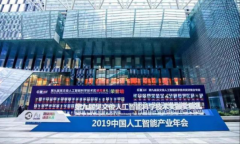本篇文章4511字,读完约11分钟
How Michel Clusaz deploys the mobile Agras T10 for efficient vineyard protection
Introduction
Perched amidst the tranquil setting of North-West Italy lies the Aosta Valley, a region steeped in rich viticultural history. Dating back to the Roman era, the cultivation of vines has been an integral part of the local culture and economy. The ideal climate conditions, the fertile soils, and the slopes of the valley have fostered the growth of a plethora of vine varieties, each narrating a unique tale of the region's viticulture.

The Challenges of Vineyard Management
Cultivating grape vines presents a host of intricate challenges closely linked to labor-intensive routines. Ensuring the health and vitality of the vines is a demanding task that requires close attention and meticulous care. However, when the scale of the operation grows, maintaining the same level of detail and care becomes highly impractical due to the sheer manpower required.
Traditional Farming Techniques: A Look Back
Conventional methods of vineyard maintenance have long relied on age-old practices, where each inpidual vine receives meticulous care and attention. The use of knapsack sprayers is central to these techniques, but due to the labor-intensive nature of this manual process, it becomes exceedingly time-consuming. This challenge is further compounded in regions like the Aosta Valley, characterized by steep slopes and rolling hills, where tractors are not a viable option. Additionally, the use of crewed cropduster aircraft is not feasible due to the dangers involved and the issue of chemical drift.
Michel Clusaz: The Man Behind The Vineyard

This case study delves into the story of Michel Clusaz, an agricultural entrepreneur who tends to the timeless vineyards nestled in the heart of the Aosta Valley, and the burgeoning relationship between agricultural drone technology and the successful management of the vines. His educational journey led him to pursue studies in agriculture and oenology, equipping him with the knowledge to embrace and appreciate innovative technologies in the agricultural sector.
Throughout his life, agriculture and innovation have always been intertwined in Michel Clusaz's world. His unwavering dedication to progressive farming techniques have driven him to consistently explore advancements in agricultural technology. To stay at the forefront of the industry, Michel routinely immerses himself in online research, attends trade shows, and keeps abreast of new technologies through social media. His fascination with drone technology began to blossom nearly five years ago as he closely followed its evolution in agricultural applications.
In 2019, a pivotal moment arrived with a field test at the Kiuva cooperative site in Arnad. The event showcased the predecessor model to the DJI Agras T10, known as the MG1P.
Spearheaded by the firm Getto s.n.c. and with the expertise of Paolo Marras from Aermatica3D, the demonstration of the drone in action illuminated its immense potential and practicality for use in Michel's vineyards. Convinced of the technology's viability and the benefits it could bring to his operations, Michel made the decision to integrate the drone into his vineyard management.

Agras T10 in Action
Michel's typical work operations with the T10 drone in the vineyards of Sarres, Villeneuve, and Sentiere, Nus, during the end of May 2022, exemplify the efficient use of modern agricultural technology. Operating under dry conditions with no wind and an ambient temperature of 25 ℃, Michel utilized the T10 drone, renowned for its lightweight design and suitability for treating relatively small, disconnected areas on steep terrains. This choice was strategic for navigating the south-oriented vineyards characterized by a 40% slope and sandy dry terrain across a total treated area of 4 hectares.
The drone was deployed every 15 days for foliar fertilization, utilizing a very concentrated liquid fertilizer, applied at less than 100 liters per hectare. This precise application, enabled by the T10's advanced features such as Terrain Following and Atomized Spray, ensured optimal coverage with minimal chemical usage. Flying at a height of 2-3 meters above the crops and maintaining a line spacing of less than 2 meters, the T10 performed continuous spraying operations, totaling 40 flights over six hours, including time spent moving between the 12 fields spread over 50 kilometers.
see more information: https://ag.dji.com/case-studies/agras-t10-italian-vineyard










